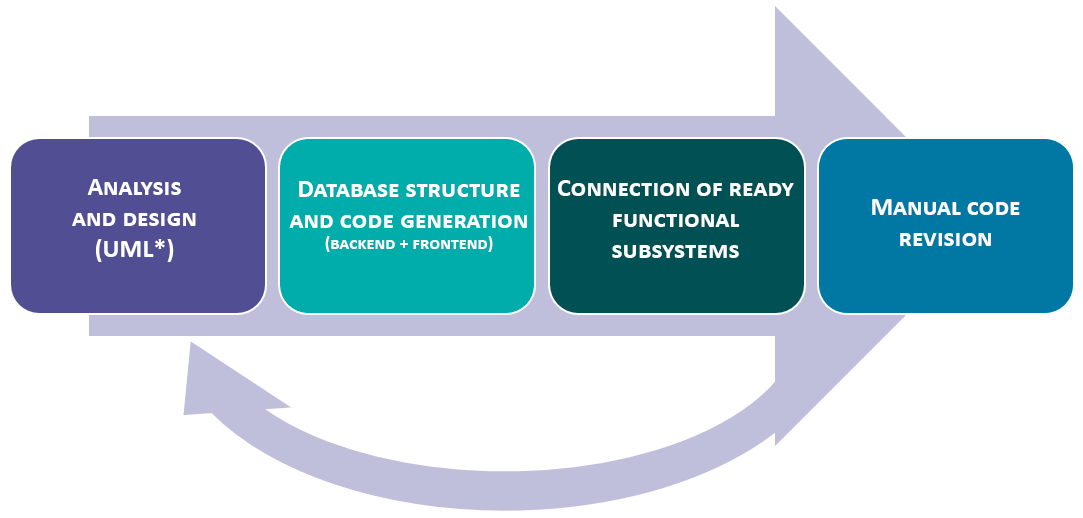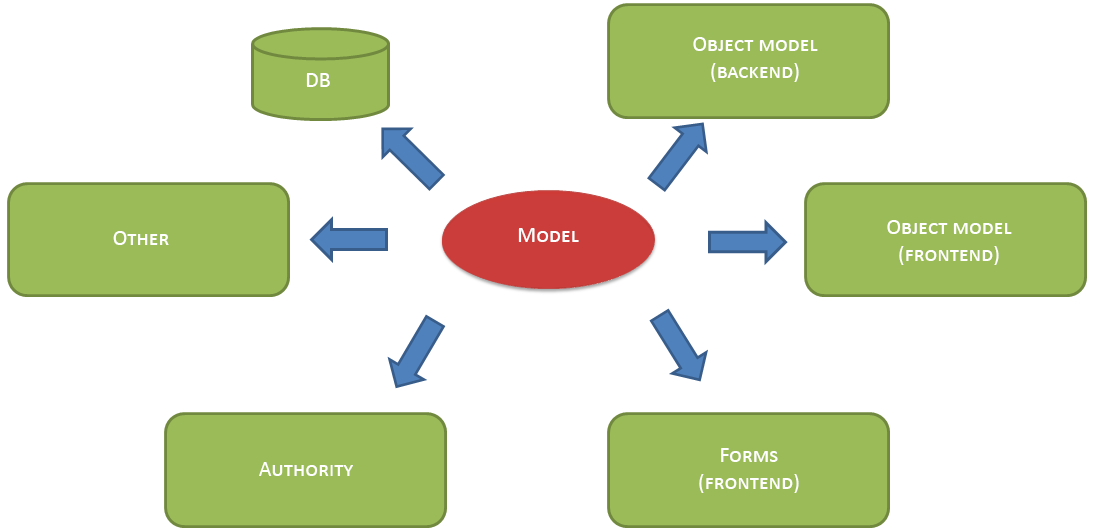Process description
The Flexberry platform allows developers to move to a new level of production process organization by introducing a mandatory design phase, as a result, companies get in a formalized, machine-readable model of the future system. The second important step in improving production efficiency is the use of ready – made modules and components of the future system-Flexberry framework. And finally, the ability to get automatically a working application by generating code based on a formalized model that ensures fast and accurate execution of business analyst’s ideas.
Key development features:
- Model First tough approach
- Development project consists of "typical" stages
- Iterative refinement of applications implies a "safe" code regeneration
Design and programming process diagram
It is a mandatory design stage!

- Analysis and design
- Gathering requirements. Analysts survey subject areas, create diagrams and prototypes of the interface that align with the subject area carriers. The Flexberry Designer is used.
- The formulation of technical specifications. Analysts translate client’s requirements into highly technical specifications.
- Database and code generation
- Object design. Generation of an application.
- Demonstration of a first application prototype.
- Detail of technical specifications.
- Connection of ready functional subsystems
- Connection of functional subsystems
- Subsystem configuration in application prototype
- Demonstration of application prototype with a functional subsystem
- Detail requirements, statements
- Manual code revision
- Business logic programming, development of business process specific components and forms.
- Demonstration of the application prototype next stage.
- Detail requirements, statements
- Modification of UML-models, degeneration.
- Revision of business logic, forms.
- Repeat the process until the application implements all the necessary functions.
- Release of the product version, transition to support and maintenance.
Design and programming process participants
The design process usually involves performers in different roles. It is important to collect qualitatively information system requirements to help the team quickly and efficiently turn the formalized requirements into a ready-made application. That is the main task of the Flexberry platform.

